#Mount Vernon
Text

treading barn, Mount Vernon, Virginia
photo: David Castenson
243 notes
·
View notes
Text
A Young Person's Guide to 18th-Century Western Fashion
unabridged version at blogspot
General info
Cox, Abby. "I Wore 18th-Century Clothing *Every Day for 5 YEARS & This Is What I Learned (Corsets Aren't Bad!)." YouTube. May 10, 2020.
Cullen, Oriole. “Eighteenth-Century European Dress.” In Heilbrunn Timeline of Art History. New York: The Metropolitan Museum of Art, 2004.
Glasscock, Jessica. "Eighteenth-Century Silhouette and Support." In Heilbrunn Timeline of Art History. New York: The Metropolitan Museum of Art, 2004.
Accessories
Banner, Bernadette. "Women's Pockets Weren't Always a Complete Disgrace | A Brief History: England, 15th c - 21st c." YouTube. April 10, 2021.
Colonial Williamsburg. "#TradesTuesday: Men's Accessories." YouTube. June 13, 2021.
Murden, Sarah. "The Georgian era fashion for straw hats." All Things Georgian. December 6, 2018.
Cosmetics & hygiene
Cox, Abby. "I Followed an 18th-Century Moisturizer & Sunscreen Recipe & it kinda worked??." YouTube. February 21, 2021.
Cox, Abby. "We tried making *5* different 250 year old rouge (blush) recipes || [real] regencycore makeup." YouTube. August 29, 2021.
JYF Museums. "Hygiene in the 18th Century | From the Farm to the Army." YouTube. August 21, 2021.
Décor
Heckscher, Morrison H. “American Rococo.” In Heilbrunn Timeline of Art History. New York: The Metropolitan Museum of Art, 2003.
Munger, Jeffrey. “French Porcelain in the Eighteenth Century.” In Heilbrunn Timeline of Art History. New York: The Metropolitan Museum of Art, 2003.
Formal wear
SnappyDragon. "This dressing gown changed fashion forever : the feminist history of going out in loungewear." YouTube. April 15, 2022.
Stowell, Lauren. "The Many Types of 18th Century Gowns." American Duchess. March 15, 2013.
Zebrowska, Karolina. "Cottagecore Style Is Much Older Than You Think." YouTube. June 30, 2021.
Hair care
Cox, Abby. "I made 250-year-old Hair Products Using Original Recipes (and animal fat...)." YouTube. November 7, 2021.
Cox, Abby. "I tried a 300-year-old hair care routine for a year & this is what I learned (it's awesome!)." YouTube. January 23, 2022.
Cox, Abby. "What's the Deal with 18th Century Wigs? (and why Bridgerton really messed this up)." YouTube. June 1, 2023.
Laundry
Cox, Abby. "Making 300 Year Old SLIME for Laundry Day." YouTube. June 15, 2023.
Townsends. "Historical Laundry Part 2: No Washing Machine, No Dryer, Hit It With A Stick?" YouTube. June 3, 2019.
Outer- & working-wear
JYF Museum. "Getting Dressed | Clothing for an 18th Century Middling Woman." YouTube. March 18, 2021.
Major, Joanne. "The practicalities of wearing riding habits, and riding ‘en cavalier’." All Things Georgian. March 12, 2019.
Rudolph, Nicole. "What did Pirates ACTUALLY Wear? Fashion at Sea in the 18th c & Our Flag Means Death Costumes." YouTube. May 8, 2022.
Shoes
Chin, Cynthia E. "Martha Washington's Shoes." George Washington's Mount Vernon. No date.
Murden, Sarah. "18th-century shoes." All Things Georgian. December 15, 2015.
Rudolph, Nicole. "Real 18th century Shoes? Historical Shoemaker Examines an Antique." YouTube. December 13, 2020.
Textiles
Cox, Abby. "18th Century Printed Cotton Do's & Don't's." American Duchess. December 23, 2019.
Stowell, Lauren. "Fabrics for the 18th Century and Beyond." American Duchess. June 14, 2021.
Townsends. "Oil Cloth - Waterproof Coverings for Your Campsite." YouTube. July 30, 2018.
Undergarments
Major, Joanne. "Quilted Petticoats: worn by all women and useful in more ways than one." All Things Georgian. November 20, 2018.
Rudolph, Nicole. "Making 18th century Stays for the Ideal Body Shape : Historical Undergarments." YouTube. August 12, 2023.
SnappyDragon. "RUMP ROAST : Ranking historical fashion's wildest fake butt pads." YouTube. October 27, 2023.
Townsends. "Sewing Histories' Most Popular Garment - The Fabric Of History - Townsends." YouTube. September 3, 2022.
#reference#history#abby cox#bernadette banner#fashion#hair care#hairstyle#youtube#video#nicole rudolph#townsends#us history#american history#colonial williamsburg#jamestown#georgian era#rococo#1700s#american duchess#mount vernon#bridgerton#the metropolitan museum of art#our flag means death
139 notes
·
View notes
Text
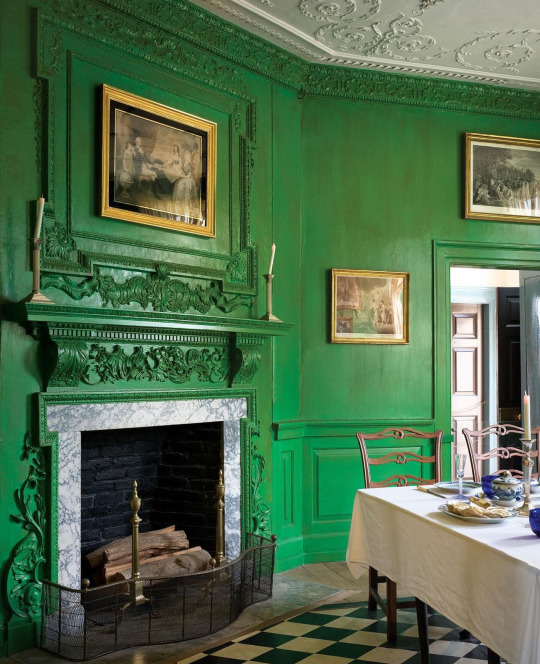
118 notes
·
View notes
Text

Roberts Drive, Mount Vernon, Missouri.
117 notes
·
View notes
Text


George Washington's 250-Year-Old Cherries Found Buried at Mount Vernon
Archaeologists found something incredibly rare in the cellar of George Washington's home at Mount Vernon: Two intact jars of cherries buried in the basement of the first U.S. president's house.
Nick Beard, project archeologist at Mount Vernon, said on Tuesday that he had been excavating the basement "for quite a while" when he saw the lip of one of the jars in November.
When the bottle started to peek out from the earth, he proceeded carefully but said he didn't think it would turn out to be anything out of the ordinary, adding that it's common to find wine bottles and glasses at the site about 15 miles south of Washington, D.C.
In fact, Beard stepped away from the bottles to help on a more immediate project. Only when he returned several weeks later did he realize what he discovered.
As he worked, more and more glass became exposed. He tried to wiggle the glass out of its resting place, but when he did his fingers got a little wet.
That's when he noticed whatever he was working on was full of liquid.
"Which means if it's that full of liquid then it has to be intact enough to hold that liquid," said Beard. "That's not common, so that immediately got me excited."
Uncovered jars reveal centuries-old cherries
When Beard further revealed the jars, he called other archeologists to come check his findings.
The jars were fully excavated on March 22. The cherries were removed from the bottles to help preserve the glass, but after April 30, the glass will be sent off for conservation. Its contents will be sent to a lab for analysis and be tested in a controlled environment by specialists, according to a press release from Mount Vernon.
"It's extraordinary," Jason Boroughs, principal archaeologist at Mount Vernon, saying something similar has only happened twice in Virginia in the past six decades:
The latest discovery is a part of the privately funded $40 million Mansion Revitalization Project at Mount Vernon.

What was in the jar?
Beard and Boroughs said that cherries and a mystery liquid were found in the jar. And the cherries, Boroughs said, actually look like cherries, even after hundreds of years.
"They're plump, they have flesh, they have pits and stems," Boroughs said. "They don't look as if they've been sitting in a bottle for 250 years, although they have."
The liquid inside even smelled like cherry blossoms, according to Mount Vernon.
The cherries in the bottles were probably dry when they were buried, Boroughs said.

While the archeologists know what the cherries are, the liquid is still a bit of a mystery.
Lily Carhart, curator of the preservation collections at Mount Vernon, said it's possible the groundwater got into the bottle after the cork that sealed it deteriorated.
The liquid still needs to be tested, Boroughs said. And there is a small possibility it could've been a type of alcohol, like a brandy or cognac.
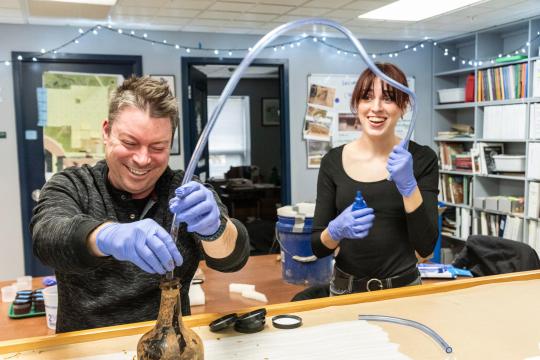

Why were the cherries buried?
Enslaved laborers picked the cherries, wiped them off to avoid condensation and placed them into the jar. Then, that jar was corked and buried sometime between 1758 and 1776, when both George and Martha Washington were living at the home, according to Boroughs.
He added that the method would've kept the fruit inside the bottle preserved for up to a year. It was one of the most popular ways to preserve berries and its how folks in colonial America preserved food before there were refrigerators.
"It pretty much keeps them isolated and sealed from the atmosphere, from air and from fungus and other things that could attack" he said.
According to Boroughs, the cherries were supposed to be served on George Washington's dinner table, but instead were forgotten and buried under a brick floor that was placed in the 1770s, sealing its fate as a sort of a "time capsule."



Can you still eat the cherries?
"You would not want to put that close to your face," Carhart said about the cherries.
Boroughs said that it could actually be possible to eat them, but "nobody wants to try."
Why is this discovery significant?
Boroughs said the discovery is remarkable because he "can't count the number of times 18th-century food remains have been found intact" the way the cherries were.
"We're the first people to touch these objects since they were put in the ground by an enslaved person," Boroughs said.
While the discovery itself is incredible, the archeologist said the stories that can be uncovered from it are just as amazing.
"We think of these items sort of as the material bits of lives that we can recover from the ground," Boroughs said. "These bottles tell stories. They're attached to people who had real lives and if we know how to put the pieces together, we can piece together something about their lives."
Beard added that it feels "surreal" to have such an "immediate connection with the people that lived back then."
By Julia Gomez.
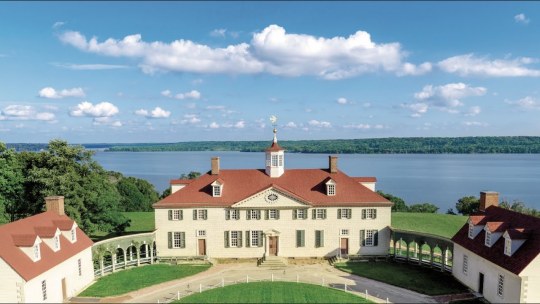


#George Washington's 250-Year-Old Cherries Found Buried at Mount Vernon#Mount Vernon#George Washington#ancient artifacts#archeology#archeolgst#history#history news
32 notes
·
View notes
Text

D e n z e l
W a s h i n g t o n
88 notes
·
View notes
Text
(amrev) Book pile got a new addition today AYYY
(thx Hannah :33)

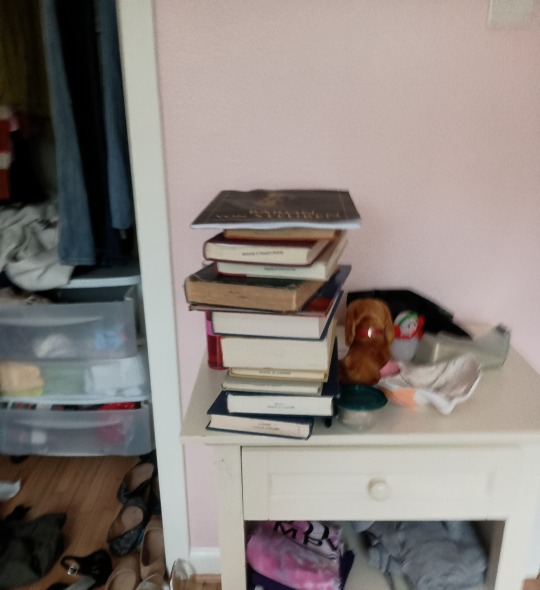
#nerd stuff#amrev#american revolution#baron von steuben#von steuben#queer history#lgbtq history#ofc im using that tag for him teehee#books#booktok#history#history nerd#americanrevolution#american revolutionary war#continental army#friedrich wilhem von steuben#mount vernon#18th century#freiherr von steuben#pls tell me thats a tag smh#yeah uh#idk how tags work#and#idk what else to tag#bc#idk what ik doing#TEEHEE
30 notes
·
View notes
Text


Unfortunately RedBird did not make the last round of Cadbury voting, but she's still the cutest piggie ever!! 💓
You can keep up with her adventures on Facebook or Instagram.
#redbird#little redbird#mount vernon#baltimore#maryland#terra alta#west virginia#guinea pig#guineapig#guinea pigs#guineapigs#guinea pigs of tumblr#pigblr#guinea piggies#petblr#pets are family#cute pets#small pets#exotic pets#cavylife#cavylove#guinea pig life#guinea pig love#rodentblr#cadbury
22 notes
·
View notes
Photo


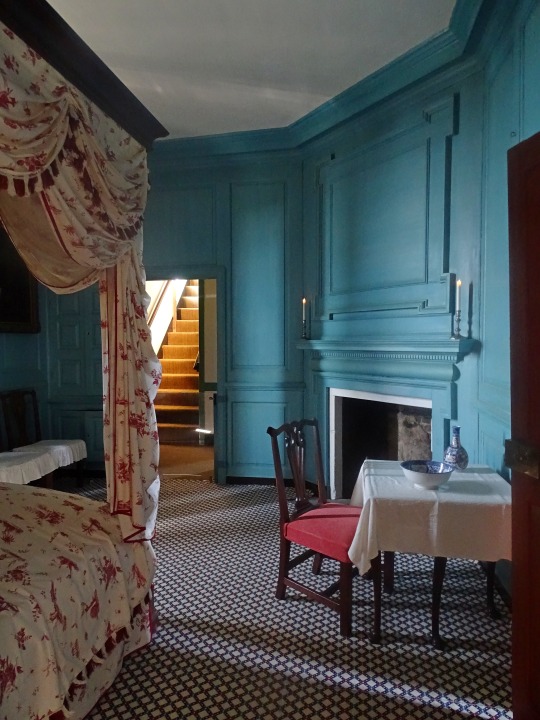
George Washington made some interesting decorating choices.
Explore Mt. Vernon on my website: https://wanderingjana.com/MtV
#george washington#travel#architecture#mansion#virginia#mount vernon#house#federal architecture#1700s#wanderlust#museum#house museum#american architecture#decor#wanderingjana
97 notes
·
View notes
Text
24 Days of La Fayette – Day 24
After hopelessly falling behind schedule (and honestly, whom was I kidding?) let us have a look at one of La Fayette’s most iconic portraits – the painting showing him in his continental army uniform done by Charles Wilson Peale.

The was commissioned by George Washington and cost 20 Guineas. It is commonly dated to 1779 but Peale used to date his paintings when he started working on them and not when he finished it. And La Fayette’s portrait had to hit a few stops before being finished. Peale wrote to Washington on July 21, 1780:
Dr Genl
nothing but dire necessity would have compel’d me to have called on you for any money until the end of the War. but you will allow me to relate to you my situation, as it will be my best appolegy.
The House I live in being unexpectedly Sold, I am warned to leave it in a very short time, being unable to get any place to Rent in which I could follow my profession. I have been under the necessity of entering into an Engagement for the purchase of a House. and have promised a payment by the first of next month, in confidence that I shall get it from 3 or 4 Gentlemen for whom, I have done some Bussiness. The portrait of the Marquis is thought very like. yet I hope to emprove it when the Marquis will favor me with another sitting—The other parts of the picture, I will finish with great care without loss of time. I am Dr Genl with great respect you most obedient Humble Servant
Cha. Peale
The Coppy of your portrait in Miniature five Guineas.
The half length of the Marquis de la Fayette. twenty Guineas.
“To George Washington from Charles Willson Peale, 21 July 1780,” Founders Online, National Archives, https://founders.archives.gov/documents/Washington/03-27-02-0193. [Original source: The Papers of George Washington, Revolutionary War Series, vol. 27, 5 July–27 August 1780, ed. Benjamin L. Huggins. Charlottesville: University of Virginia Press, 2019, p. 233.] (12/24/2023)
Some time later, on December 12, 1780, Washington wrote to Peale, inquiring after the portrait:
Dr Sir,
I perswade my self you will embrace the oppertunity of the Marquis la Fayette’s visit to Philadelphia to give the picture of him the finishing touches. You may not have another oppertunity and I wish for its completion. I am Dr Sir Yr Obedt Servt
Go: Washington
P.S. as I presume you must be done with my picture of the King of Prussia ’ere this I should be glad to have it returned to me.
“From George Washington to Charles Willson Peale, 12 December 1780,” Founders Online, National Archives, https://founders.archives.gov/documents/Washington/03-29-02-0321. [Original source: The Papers of George Washington, Revolutionary War Series, vol. 29, 28 October–31 December 1780, ed. William M. Ferraro. Charlottesville: University of Virginia Press, 2021, pp. 487–489.] (12/24/2023)
Peale replied promptly on December 18, 1780:
I expect that the Marquis will give me a setting tomorrow, I waited on him in the beginning of last Week and found that he was engaged with the other foreugn Officers in taking a View of the several Grounds of battles and Encamptments. My intention is to give you the most compleat portrait I am Capable of painting.
Notes from “From George Washington to Charles Willson Peale, 12 December 1780,” Founders Online, National Archives, https://founders.archives.gov/documents/Washington/03-29-02-0321. [Original source: The Papers of George Washington, Revolutionary War Series, vol. 29, 28 October–31 December 1780, ed. William M. Ferraro. Charlottesville: University of Virginia Press, 2021, pp. 487–489.] (12/24/2023)
The last letter regarding this portrait was written by Peale and addressed to Martha Washington on January 16, 1781:
I should be glad to be informed whether the portrait of the King of Prussia has yet reached head quarters: please to acquaint his Excellency that his picture of the Marquis is much aprroved off altho’ not entirely finished, for I have thought proper to ma[k]e an entire change of the back ground.
Notes from “From George Washington to Charles Willson Peale, 12 December 1780,” Founders Online, National Archives, https://founders.archives.gov/documents/Washington/03-29-02-0321. [Original source: The Papers of George Washington, Revolutionary War Series, vol. 29, 28 October–31 December 1780, ed. William M. Ferraro. Charlottesville: University of Virginia Press, 2021, pp. 487–489.] (12/24/2023)
It is not known when Peale finally completed the portrait.
There are often some comments that this was not Peale’s peak performance, but something is remarkable about this painting – it does not sugarcoat anything. Many paintings of La Fayette show a very idealised version of him. Peale on the other hand shows us a young, slightly fleshy, red-faced General with a receding hairline.
The portrait was and still is fairly well-known and popular. Washington had it displayed in Mount Vernon’s Front Parlor. It was later moved to a guest room, commonly referred to the “Lafayette room” – the room the Marquis occupied when visiting the Washington’s in 1784. It’s former place in the Front Parlor was then occupied by a large painting of the whole La Fayette-family. It was later given to the Washington and Lee University. The spot in the “Lafayette-room” is now filled with a high-quality reproduction.
Merry Christmas Everybody!
#24 days of lafayette#art#marquis de lafayette#la fayette#french history#american history#american revolution#history#letter#charles wilson peale#george washington#martha washington#1779#1780#1781#mount vernon#founders online
20 notes
·
View notes
Text

photo: David Castenson
294 notes
·
View notes
Text

Man dressed for Lunar New Year.
Mount Vernon. Baltimore, MD. 2024.
#mount vernon#baltimore#maryland#photographers on tumblr#original photographers#michael wriston#canon 6d#street portrait#portrait photography#lensblr
13 notes
·
View notes
Text
The feminine urge to roll around on George Washington's death bed was real.

19 notes
·
View notes
Text

N Sandusky Street, Mount Vernon, Ohio.
34 notes
·
View notes
Text

4.10.24.
Mount Vernon Library. 📚🌷
#mine#polaroid aesthetic#polaroid#polaroid photography#instant photography#photography#pnw#pnw photography#flowercore#flowers#books & libraries#tulip fields#tulips#red tulips#yellow tulips#tulip flower#library#mount vernon#washington
6 notes
·
View notes
Text

View of bronze tablet commemorating George Washington's 200th birthday, installed on boulder at Seven Mile Road and Pontchartrain Drive. Inscription reads: "Detroit Chapter, Sons of the American Revolution planted these 13 trees emblematic of the 13 original colonies or states, year of 1932 in commemoration of the bicentennial anniversary of the birth of George Washington. These walnut trees are from trees planted by him at Mount Vernon."
Burton Historical Collection, Detroit Public Library
#george washington#washington#detroit#plaque#detroit history#trees#walnut#mount vernon#detroit public library
14 notes
·
View notes